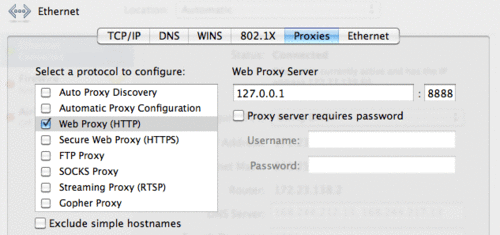Httpcharles For Mac
FYI, for those who got really excited reading @boomhauer 's comment: Fiddler for OSX is still in Alpha, having last been touched in July 2013, it requires the Mono framework (so it's basically just a wrapper for the Windows version, not actually re-factored for Cocoa), and the release has the note: 'Mac Note: The WinForms framework on Mac is almost unusably buggy. Your best bet is to run Fiddler inside a Linux or Windows Virtual Machine and point the Mac's proxy settings at that.'
Http Charles For Mac Pro
– Mar 9 '16 at 0:20. Not what you asked, but in Firefox the add-on is all I need if I want to edit and re-play requests, including changing the URL and the HTTP method. In Firebug, the shows all requests and responses. Likewise, in Safari the of the built-in Web Inspector covers most of my needs as well. (Enable the Web Inspector through the preferences: Show Develop menu in menu bar.) Chrome and Firefox have similar tools. When things get more complicated, I fire up my packet sniffer.
However, unlike Fiddler, Wireshark does not let you change the data, and does not support things like auto responders, like Fiddler apparently does. Scan virus avira. For Wireshark, see for some generic HTTP capturing information, and, for some example display filters.
(You may want to set the capture filter to ' port 80', to show all requests to that port, and responses from that port. Or, to limit to some server, use capture filter ' port 80 and host www.google.com'.) Like: # Show only 404: page not found http.response.code 404 # Show only certain HTTP methods http.request.method 'POST' http.request.method 'PUT' # Show only javascript http.contenttype contains 'javascript' Note that Wireshark can decompress gzip or deflate encoded (compressed) things on the fly for you.
That makes things much easier to read as most web servers will compress the data they send to a browser. (As for auto responders: the excellent has a short video on how to use it to debug Ajax requests. If you don't know JS Bin, then first view the introduction video.). In addition to Charles (already mentioned), I also like the add-on for Mozilla Firefox. Like Charles, you can use it on both Mac and Windows. It's lighter-weight than Charles because it lives in the browser, useful for quick troubleshooting.


Here's some information from the HttpFox page: HttpFox monitors and analyzes all incoming and outgoing HTTP traffic between the browser and the web servers. It aims to bring the functionality known from tools like HttpWatch or IEInspector to the Firefox browser. Information available per request includes:.
Request and response headers. Sent and received cookies. Querystring parameters. POST parameters. Response body And, a screenshot.
Not a proxy, but it does help in debugging HTTP:. Simply start a scan on the interface you're going to have the HTTP traffic on, execute the traffic and then stop scanning and type 'HTTP' as the filter string.
You will then be able to inspect all the packets of the HTTP conversation. With the Packet Detail view open you can open the HTTP section and it will stay open between packets. It's a great tool to have and it doesn't require you to change the browser proxy. On the other hand it cannot help with HTTPS traffic since that's encrypted.
(Although it ). It seems that the free can do part of the trick. Of course it can block all kind of content, and responses before the browser receives them.
But it can in fact. And though not true debugging, it also offers logging.
So, it might suit: There are 4 types of scripts running inside GlimmerBlocker, and some objects are only defined for some of the script types:. global proxy: this sets the global proxy settings, and can test for e.g. Location name, AirPort network. request modification: this can change the requested URL, send back a redirect response to the browser, or send text/html back to the browser. keyword expansion. Safari-only, AvB.

transform: modify the response received by the web-server before it is sent back to Safari or any browser that is set up to use the proxy provided by GlimmerBlocker, AvB. (One can also use it to include various Greasemonkey scripts in the received response, without using a Greasemonkey add-on, like without installing any add-on.).